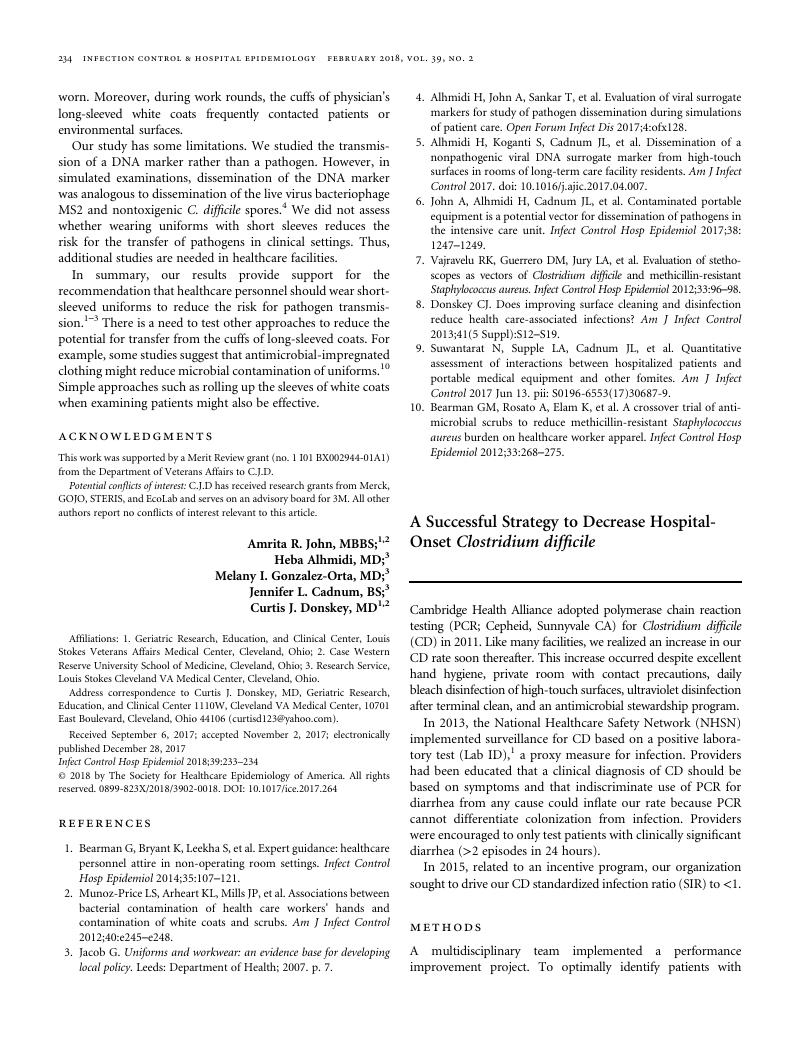Crossref Citations
This article has been cited by the following publications. This list is generated based on data provided by Crossref.
Madden, Gregory R.
Poulter, Melinda D.
and
Sifri, Costi D.
2018.
Diagnostic stewardship and the 2017 update of the IDSA-SHEA Clinical Practice Guidelines for Clostridium difficile Infection.
Diagnosis,
Vol. 5,
Issue. 3,
p.
119.
Olans, Rita Drummond
Hausman, Nicholas Bowditch
and
Olans, Richard Neal
2020.
Nurses and Antimicrobial Stewardship.
Infectious Disease Clinics of North America,
Vol. 34,
Issue. 1,
p.
67.
LaPorte, Megan Rose Carr
and
Bruno-Murtha, Lou Ann
2020.
Achieving and maintaining low rates of hospital-onset Clostridioides difficile.
Infection Control & Hospital Epidemiology,
Vol. 41,
Issue. 8,
p.
995.
Mizusawa, Masako
and
Carroll, Karen C.
2021.
The future of Clostridioides difficile diagnostics.
Current Opinion in Infectious Diseases,
Vol. 34,
Issue. 5,
p.
483.
Mizusawa, Masako
and
Carroll, Karen C
2021.
Advances and required improvements in methods to diagnosing Clostridioides difficile infections in the healthcare setting.
Expert Review of Molecular Diagnostics,
Vol. 21,
Issue. 3,
p.
311.
Pestaña, M. Íñigo
Pérez-García, A.
and
Abad, R. Falcón
2022.
Infecciones relacionadas con cuidados sanitarios.
Medicine - Programa de Formación Médica Continuada Acreditado,
Vol. 13,
Issue. 56,
p.
3267.
Katzman, Michael
Cohrs, Austin C.
Hnatuck, Patricia E.
Greene, Wallace H.
Reed, Stephanie M.
Ward, Michael A.
Glasser, Frendy D.
Loser, Matthew F.
and
Hale, Cory M.
2023.
Impact of a multipronged approach to reduce the incidence of Clostridioides difficile infections in hospitalized patients.
American Journal of Infection Control,
Vol. 51,
Issue. 6,
p.
668.


